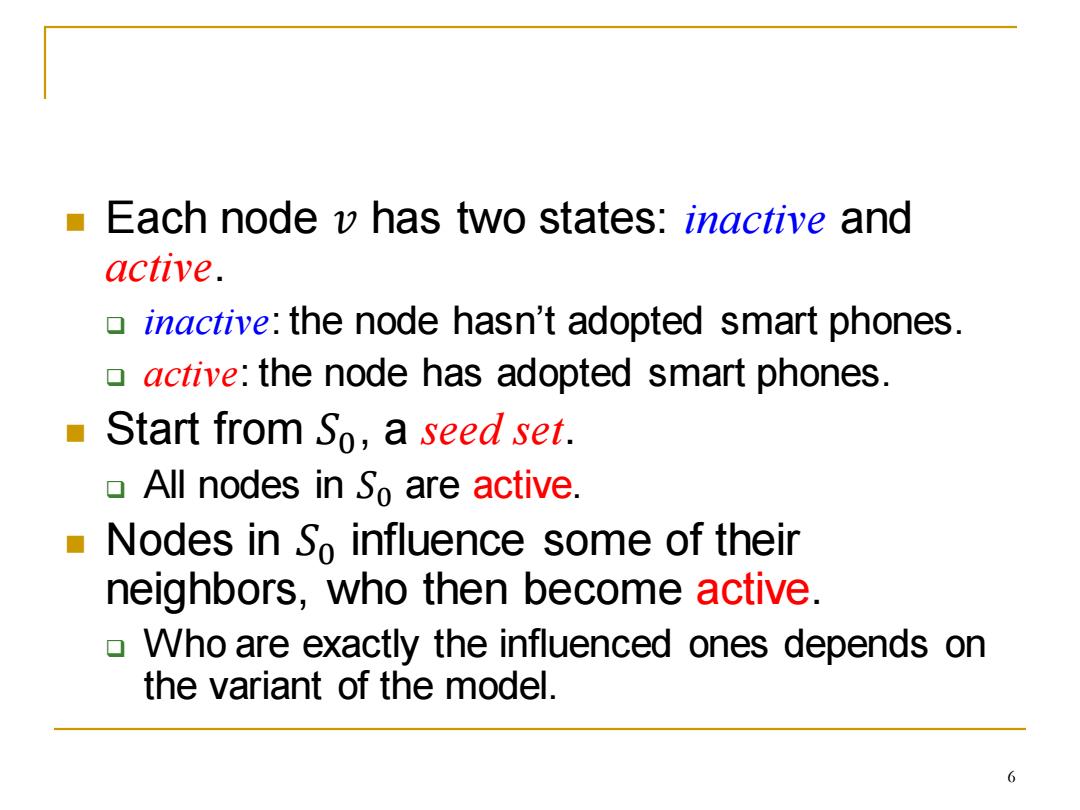
Each node v has two states:inactive and active. 0 inactive:the node hasn't adopted smart phones. 0 active:the node has adopted smart phones. Start from So,a seed set. All nodes in So are active. Nodes in So influence some of their neighbors,who then become active. Who are exactly the influenced ones depends on the variant of the model. 6
◼ Each node 𝑣 has two states: inactive and active. ❑ inactive: the node hasn’t adopted smart phones. ❑ active: the node has adopted smart phones. ◼ Start from 𝑆0, a seed set. ❑ All nodes in 𝑆0 are active. ◼ Nodes in 𝑆0 influence some of their neighbors, who then become active. ❑ Who are exactly the influenced ones depends on the variant of the model. 6
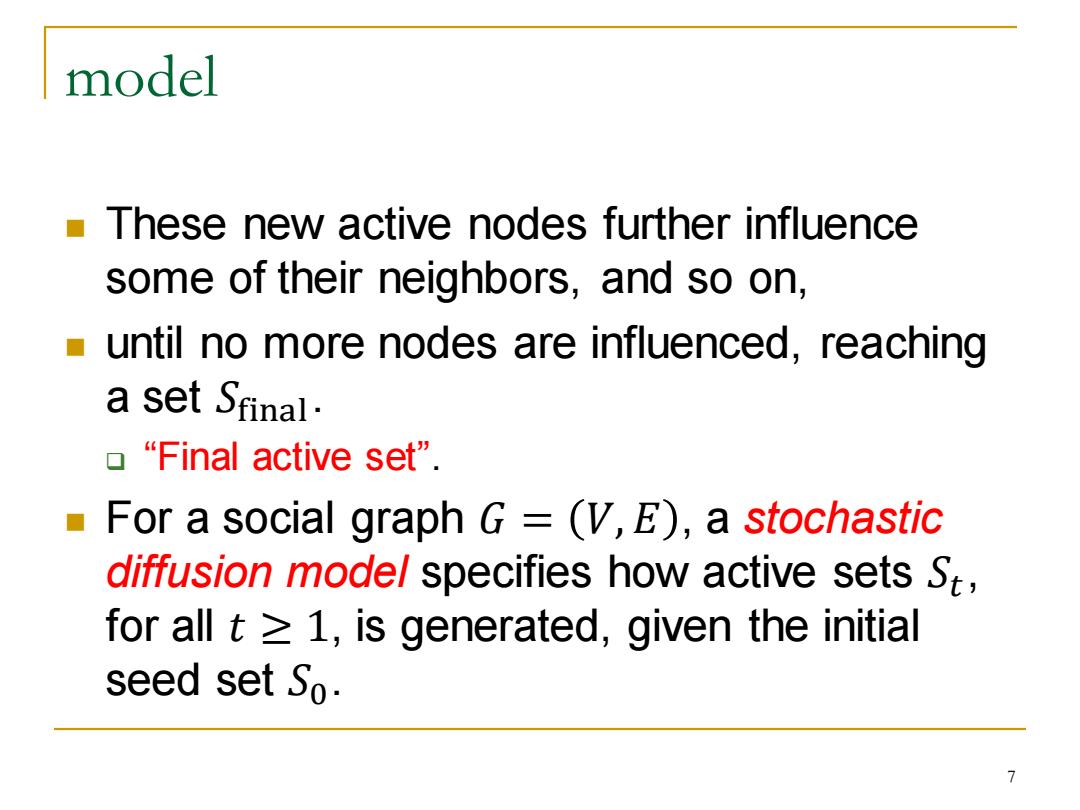
model These new active nodes further influence some of their neighbors,and so on, until no more nodes are influenced,reaching a set Sfinal. o“Final active set”. ■ For a social graph G=(V,E),a stochastic diffusion model specifies how active sets St, for all t≥1,is generated,given the initial seed set So
model ◼ These new active nodes further influence some of their neighbors, and so on, ◼ until no more nodes are influenced, reaching a set 𝑆final. ❑ “Final active set”. ◼ For a social graph 𝐺 = 𝑉, 𝐸 , a stochastic diffusion model specifies how active sets 𝑆𝑡 , for all 𝑡 ≥ 1, is generated, given the initial seed set 𝑆0. 7
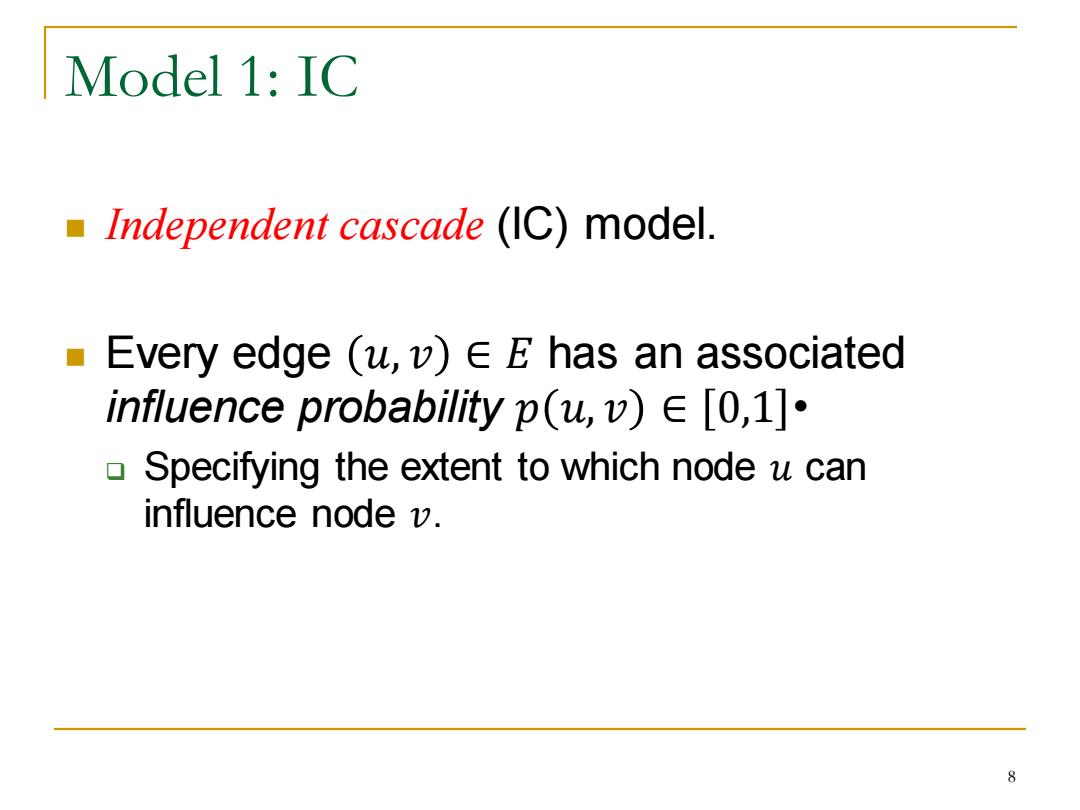
Model 1:IC Independent cascade (IC)model. Every edge (u,v)EE has an associated influence probability p(u,v)∈[0,1]· Specifying the extent to which node u can influence node v. 8
Model 1: IC ◼ Independent cascade (IC) model. ◼ Every edge 𝑢, 𝑣 ∈ 𝐸 has an associated influence probability 𝑝 𝑢, 𝑣 ∈ 0,1 • ❑ Specifying the extent to which node 𝑢 can influence node 𝑣. 8
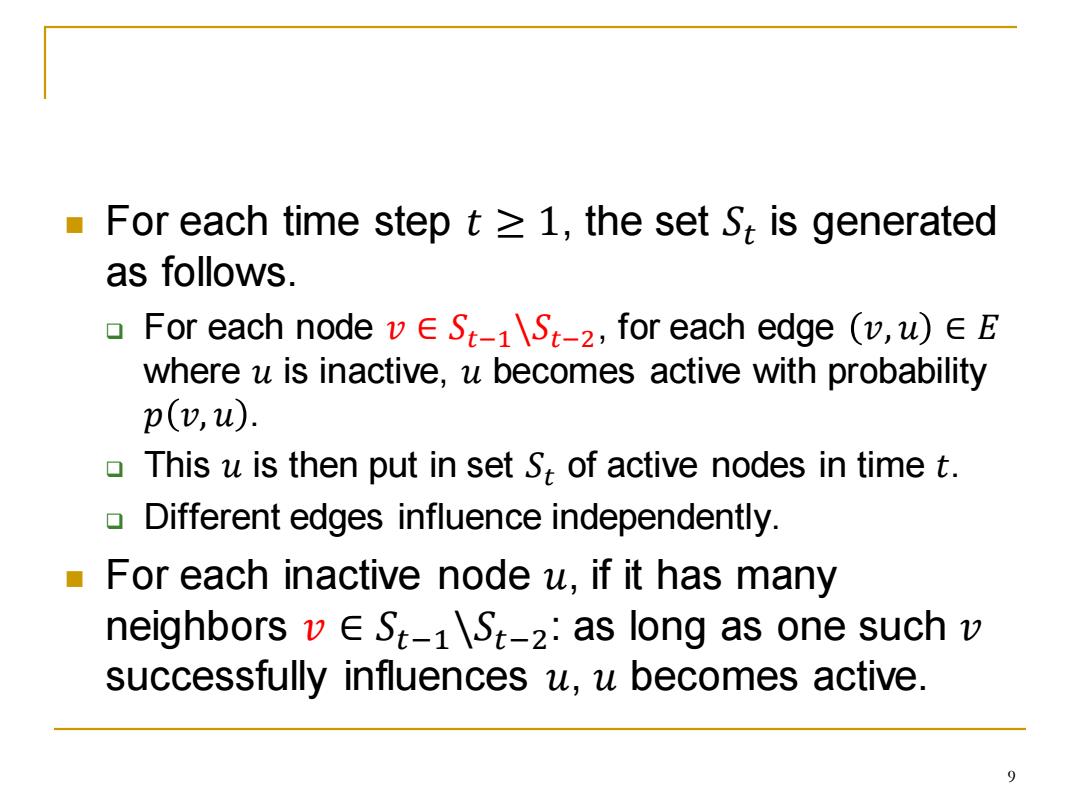
For each time step t =1,the set St is generated as follows. For each node vESt-1St-2,for each edge (v,u)EE where u is inactive,u becomes active with probability p(,u). This u is then put in set S;of active nodes in time t. Different edges influence independently. For each inactive node u,if it has many neighbors vE St-1St-2:as long as one such v successfully influences u,u becomes active. 9
◼ For each time step 𝑡 ≥ 1, the set 𝑆𝑡 is generated as follows. ❑ For each node 𝑣 ∈ 𝑆𝑡−1\𝑆𝑡−2 , for each edge 𝑣, 𝑢 ∈ 𝐸 where 𝑢 is inactive, 𝑢 becomes active with probability 𝑝 𝑣, 𝑢 . ❑ This 𝑢 is then put in set 𝑆𝑡 of active nodes in time 𝑡. ❑ Different edges influence independently. ◼ For each inactive node 𝑢, if it has many neighbors 𝑣 ∈ 𝑆𝑡−1\𝑆𝑡−2 : as long as one such 𝑣 successfully influences 𝑢, 𝑢 becomes active. 9
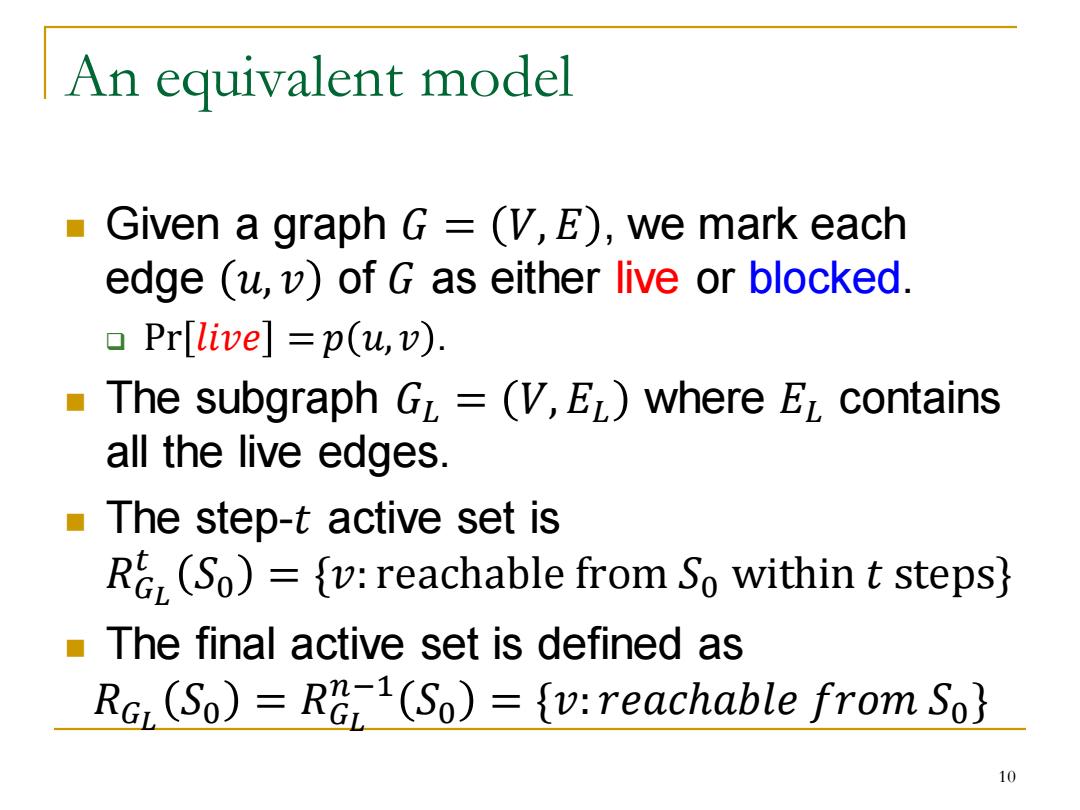
An equivalent model ■ Given a graph G=(V,E),we mark each edge (u,v)of G as either live or blocked. Pr[live]=p(u,v). The subgraph GL=(V,EL)where EL contains all the live edges. The step-t active set is R (So)={v:reachable from So within t steps} The final active set is defined as RGr (So)=RG(So)={v:reachable from So3 10
An equivalent model ◼ Given a graph 𝐺 = 𝑉, 𝐸 , we mark each edge 𝑢, 𝑣 of 𝐺 as either live or blocked. ❑ Pr 𝑙𝑖𝑣𝑒 = 𝑝 𝑢, 𝑣 . ◼ The subgraph 𝐺𝐿 = 𝑉, 𝐸𝐿 where 𝐸𝐿 contains all the live edges. ◼ The step-𝑡 active set is 𝑅𝐺𝐿 𝑡 𝑆0 = {𝑣: reachable from 𝑆0 within 𝑡 steps} ◼ The final active set is defined as 𝑅𝐺𝐿 𝑆0 = 𝑅𝐺𝐿 𝑛−1 𝑆0 = {𝑣: 𝑟𝑒𝑎𝑐ℎ𝑎𝑏𝑙𝑒 𝑓𝑟𝑜𝑚 𝑆0} 10